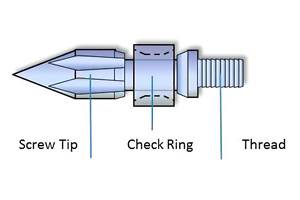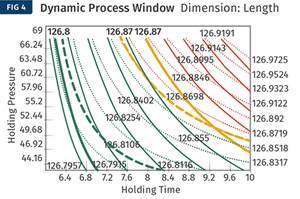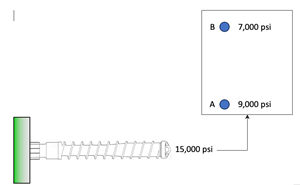Taiwan's Plastics Machinery Industry to China: It's Not You, It's Me
Despite being separated geographically by only the Taiwan Strait, which at its narrowest point is just 100 miles wide, economically, Taiwan and China are growing further and further apart.
Despite being separated geographically by only the Taiwan Strait, which at its narrowest point is just 100 miles wide, economically, Taiwan and China are growing further and further apart.
China is still Taiwan’s largest trading partner—its geographic proximity and deep cultural and historical ties help maintain that status—but it is being targeted less and less by Taiwan’s plastics and rubber machinery makers, as they seek new markets on their own and at the behest of their government.
Touring Taipei Plas last week on a press junket organized by show sponsors TAITRA (Taiwan External Trade Development Council) and TAMI (Taiwan Assn. of Machinery Industry), myself and other trade journalists from around the globe sat down with numerous leading Taiwanese equipment suppliers. Many boasted export rates above 90% but none said China was their top market.
The pivot away from China is detailed here, and apparent in the fact that China’s share of Taiwan plastics and rubber machinery exports has dropped from 30% in 2013 to 20% in 2015, with further shrinkage in the first half of 2016.
In its show-opening press conference, TAITRA and TAMI officials detailed the country’s outreach via TAITRA’s 60 overseas offices all around the globe, specifically acknowledging dignitaries on hand from Afghanistan and Malaysia. Even within the press group, you could see this strategy at work as I was joined by reporters from Mexico, Russia, Indonesia, India and Japan.
In 2014 when I attended the show, many Taiwanese suppliers noted that as they invested in new production facilities, they were doing so in Taiwan, after years of almost exclusively building up factories in China. This time around, many of those same companies acknowledged that China’s market is driven largely by cost, while Taiwanese machinery is increasingly marketed on higher technology. Because of this, more than a few said they had all but given up on selling into the mainland.
Earlier this year, Taiwan elected a new president—Tsai Ing-wen—its first female leader and only the second from the Democratic Progressive Party—a party openly opposed by the mainland. Tsai campaigned in part on a “Southward” policy, seeking greater ´óĎó´«Ă˝ and cultural ties in Southeast Asia, and she offered some interesting insights into the shifting dynamics between the Republic of China and the People’s Republic of China in this :
Q: Isn’t China your No. 1 trading partner?
A: China is still our largest trading partner; however, complementarity between our economies is decreasing. We had the ability to organize a manufacturing process, and then we moved our manufacturing capability to China to make use of their labor pool. But now the situation is very different. [Chinese] labor costs are increasing, and China has their own capability.
Q: So China has become a competitor of Taiwan?
A: They are more and more our competitors.
Breaking up, as the song says, is hard to do; it will be interesting to see how "seeing other countries" is faring for Taiwan at the next Taipei Plas in 2018.

Related Content
Got Streaks or Black Specs? Here’s How to Find and Fix Them
Determining the source of streaking or contamination in your molded parts is a critical step in perfecting your purging procedures ultimately saving you time and money.
Read MoreUsing Data to Pinpoint Cosmetic Defect Causes in Injection Molded Parts
Taking a step back and identifying the root cause of a cosmetic flaw can help molders focus on what corrective actions need to be taken.
Read MoreOptimizing Pack & Hold Times for Hot-Runner & Valve-Gated Molds
Using scientific procedures will help you put an end to all that time-consuming trial and error. Part 1 of 2.
Read MoreUnderstanding the Effect of Pressure Losses on Injection Molded Parts
The compressibility of plastics as a class of materials means the pressure punched into the machine control and the pressure the melt experiences at the end of fill within the mold will be very different. What does this difference mean for process consistency and part quality?
Read MoreRead Next
For PLASTICS' CEO Seaholm, NPE to Shine Light on Sustainability Successes
With advocacy, communication and sustainability as three main pillars, Seaholm leads a trade association to NPE that ‘is more active today than we have ever been.’
Read MoreMaking the Circular Economy a Reality
Driven by brand owner demands and new worldwide legislation, the entire supply chain is working toward the shift to circularity, with some evidence the circular economy has already begun.
Read MoreLead the Conversation, Change the Conversation
Coverage of single-use plastics can be both misleading and demoralizing. Here are 10 tips for changing the perception of the plastics industry at your company and in your community.
Read More














